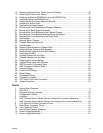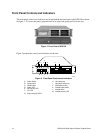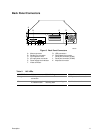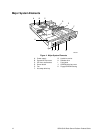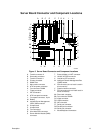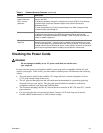14 ISP2150 2U Rack Server Platform Product Guide
Processor
Each Pentium II or Pentium III processor is packaged in a cartridge. The cartridge includes the
processor core with an integrated 16 KB primary (L1) cache, the secondary (L2) cache, and a back
cover.
The processor implements the MMX
™
technology and maintains full backward compatibility with
the 8086, 80286, Intel386
™
, Intel486
™
, Pentium, Pentium Pro, Pentium II, and Pentium III
processors. The processor’s numeric coprocessor significantly increases the speed of floating point
operations and complies with ANSI/IEEE standard 754-1985.
Each processor cartridge connects to the server board through a 242-pin slot 1-edge connector. A
retention module attached to the server board secures the cartridge. Depending on the
configuration, your server may have one or two processors.
The processor external interface is MP (Multi-Processor) ready and operates at 100 MHz. The
processor contains a local APIC (Advanced Programmable Interrupt Controller) section for
interrupt handling in MP and UP (Uni-Processor) environments.
The second level cache is located on the substrate of the S.E.C. cartridge. The cache includes burst
pipelined synchronous static RAM (BSRAM).
Memory
Only 100 MHz PC/100 ECC or Non-ECC SDRAM is supported by the server board. Memory is
partitioned as four banks of SDRAM DIMMs, each providing 72 bits of non-interleaved memory
(64 bit main memory plus ECC):
• Install from 64 MB to 2 GB of memory, using registered DIMMs.
• Install from 32 MB to 1 GB of memory, using unbuffered DIMMs.
Memory should be added in order from slot 1 to slot 4.
✏
NOTE
Do not mix registered and unbuffered memory. Non ECC memory may be
installed but ECC memory is recommended in a server environment. Mixing
Non-ECC memory and ECC memory causes all ECC features to be disabled.
The controller automatically detects, sizes, and initializes the memory array, depending on the type,
size, and speed of the installed DIMMs, and reports memory size and allocation to the server via
configuration registers.





